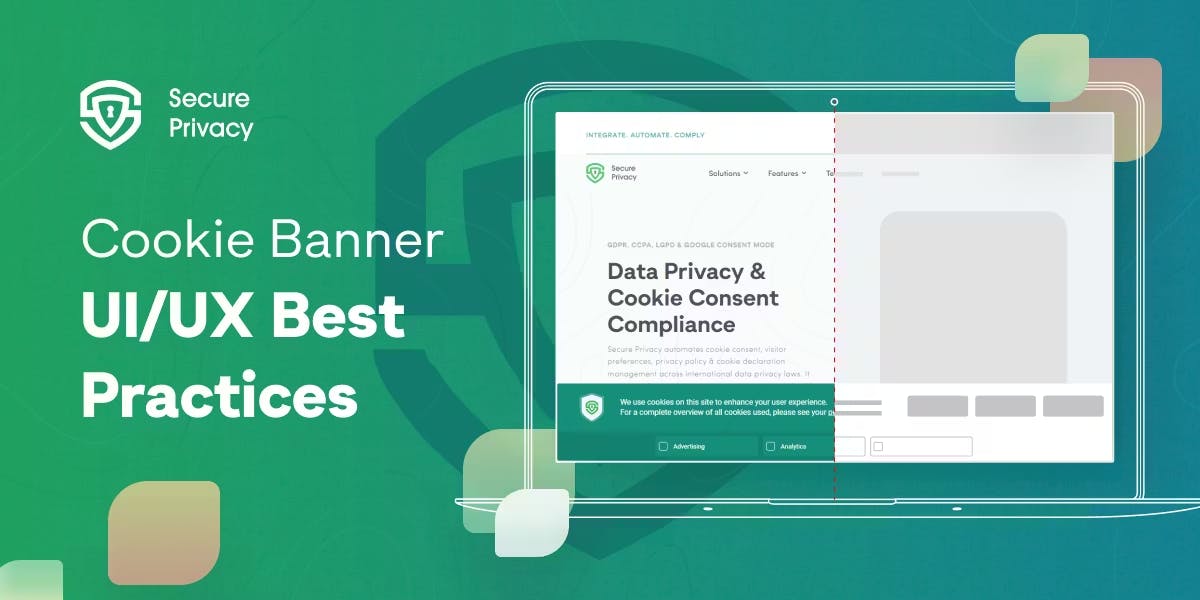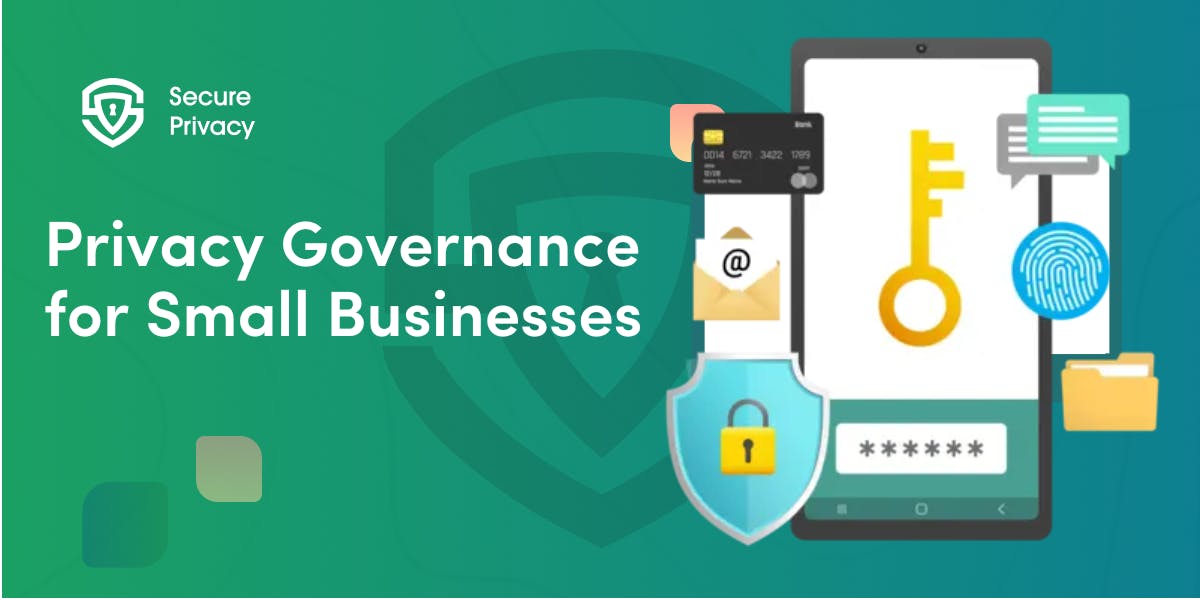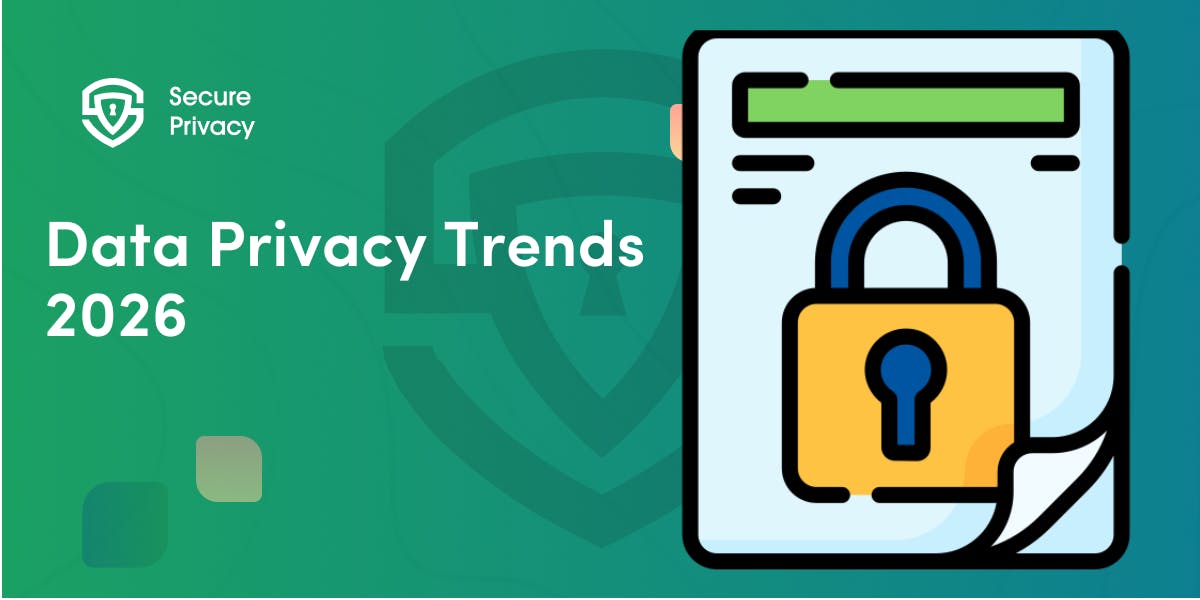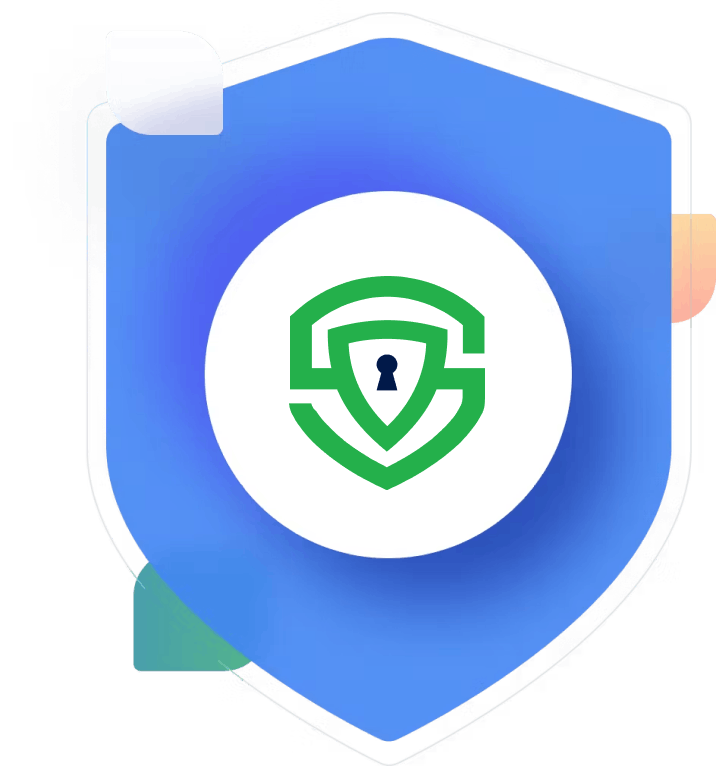Cookie Consent for SaaS Companies: A Complete Guide to Getting Compliant
Your SaaS application serves users across 47 countries from multiple subdomains. Marketing runs Google Analytics and advertising pixels, product analytics tracks feature usage, support embeds third-party chat widgets, and developers added conversion tracking last sprint without notifying legal. Now your privacy officer discovered that EU regulators are auditing SaaS companies specifically for cookie consent violations — and you're not sure which cookies fire before users consent or whether your banner even appears on all subdomains.
Cookie consent for SaaS companies involves obtaining explicit user permission before deploying non-essential cookies and tracking technologies across web applications, dashboards, marketing sites, and support portals. Unlike traditional websites, SaaS platforms must navigate complex multi-domain architectures, sophisticated third-party integrations, global user bases spanning multiple jurisdictions, and embedded components creating consent complexity that single-domain websites never encounter. Modern automation platforms (such as Secure Privacy) achieve 93.7% accuracy in cookie detection while reducing compliance workload by 60-80%.
This guide walks you through understanding legal requirements specific to SaaS environments, addressing technical challenges unique to SaaS architectures, and implementing compliant cookie consent across complex platforms. You'll discover how to select appropriate consent management solutions and maintain compliance while preserving conversion rates and user experience quality.
Why SaaS Cookie Consent Differs from Traditional Websites
SaaS companies face distinct consent challenges that fundamentally differ from traditional website compliance. Complex multi-domain architecture typically spans multiple domains and subdomains — app.company.com, support.company.com, docs.company.com — requiring cross-domain consent synchronization preventing users from encountering multiple consent banners as they navigate between related properties.
Sophisticated third-party integrations multiply compliance complexity exponentially. Modern SaaS platforms integrate dozens of tools including analytics platforms, session recording software like FullStory and Hotjar, customer support widgets, marketing automation systems, and CRM platforms. Each integration potentially sets cookies requiring careful consent management and categorization.
Global user bases with varied regulations necessitate geo-targeted consent experiences adapting to GDPR opt-in requirements, CCPA opt-out mechanisms, LGPD explicit consent mandates, and other regional privacy frameworks. Dashboard and application consent involves logged-in environments where session recordings, feature flags, and analytics tools collect detailed user interaction data requiring granular consent management beyond simple marketing website tracking.
Legal Requirements Impacting SaaS Cookie Consent
GDPR establishes foundational requirements for SaaS companies processing EU user data. Prior consent is mandatory—platforms must block all non-essential cookies until explicit user consent is obtained, as simply displaying consent banners while setting tracking cookies violates compliance. Granular consent categories enable users to accept or reject specific cookie types independently rather than all-or-nothing consent approaches.
Consent documentation requires maintaining detailed records including timestamps, banner versions displayed, specific choices made, and user identifiers for audit purposes. Withdrawal rights demand that users can revoke consent as easily as they provided it, requiring accessible preference centers throughout SaaS platforms.
The ePrivacy Directive specifically addresses tracking technologies and electronic communications with expanded scope covering session recordings, heatmaps, and behavioral analytics commonly used in SaaS platforms. Third-party script control requires explicit consent before external scripts can store or access information on user devices.
CCPA and CPRA create distinct requirements for SaaS companies serving California residents. Do Not Sell rights require clear opt-out mechanisms for data sharing with third parties including advertising and analytics partners. Transparency requirements mandate disclosure of all third parties receiving personal information, particularly relevant for SaaS platforms with extensive integration ecosystems.
LGPD and emerging global privacy frameworks require implementing consent collection for Brazilian users and providing Portuguese-language privacy notices. Organizations must enable data portability and deletion across integrated systems. Maintaining detailed processing records for cross-border data transfers becomes essential for international SaaS operations.
Technical Challenges Unique to SaaS Platforms
Multi-domain and subdomain management creates sophisticated consent synchronization requirements. Cross-domain consent sharing should enable users to provide consent once and have preferences respected across all related domains without encountering multiple banners. Subdomain configuration requires consent cookies properly scoped to parent domains enabling automatic subdomain access while maintaining security boundaries.
Browser restrictions on third-party cookies complicate traditional cross-domain consent sharing. Organizations need alternative approaches like server-side consent APIs or first-party domain strategies. Technical implementation must account for these limitations while maintaining seamless user experiences.
Third-party script integration complexity multiplies as modern SaaS platforms integrate numerous services. Session recording tools collecting detailed user interaction data require explicit consent before activation. Analytics and performance monitoring platforms need consent management that doesn't compromise essential business metrics.
Customer support widgets, chat tools, and help desk integrations often set tracking cookies requiring proper categorization. Marketing automation including email platforms, lead generation tools, and conversion tracking pixels need consent-gated activation.
Geo-targeting for global SaaS platforms demands adapting consent experiences based on user location. Regional regulation compliance addresses different requirements for GDPR opt-in, CCPA opt-out, LGPD explicit consent, and other jurisdictions. Automatic location detection must accurately identify user locations and display appropriate experiences without VPN interference.
Implementing Cookie Scanning and Categorization
Comprehensive cookie scanning and categorization begins implementation by auditing all cookies and tracking technologies across SaaS platforms. Automated scanning tools detect cookies across domains, subdomains, and integrated applications. AI-powered categorization achieves 93.7% accuracy automatically classifying cookies by purpose—strictly necessary, analytics, functional, marketing, and unclassified categories.
Third-party integration mapping documents all external services, their cookie usage, and data flows to third parties for comprehensive compliance coverage. Regular scanning schedules implement monthly automated scans detecting new cookies as marketing teams add tools and integrations without compliance review.
Designing and Deploying Consent Banners
Consent banner design and customization creates experiences balancing compliance with user experience optimization. Pre-built compliance templates start with GDPR and CCPA-compliant designs meeting legal requirements for informed consent. Granular category controls enable users to accept or reject specific cookie categories independently.
A/B testing capabilities test different banner designs, messaging, and placement optimizing consent rates while maintaining compliance. Mobile responsive design ensures consent banners work seamlessly across desktop, tablet, and mobile experiences.
How to Choose the Right GDPR Software for Your Organization
Assessing compliance needs requires evaluating multiple organizational dimensions. Industry requirements vary significantly—healthcare organizations need HIPAA integration, financial services require enhanced audit capabilities, and technology companies need developer-friendly APIs. Organizational size affects platform complexity needs and budget constraints, with SMBs benefiting from streamlined platforms while Fortune 500 companies may require comprehensive feature sets. Data complexity depends on the number and types of systems processing personal data, with organizations handling special categories requiring enhanced security and documentation. Geographic scope determines multi-jurisdictional support requirements, while growth trajectory affects long-term scalability needs.
Evaluating features and integrations demands systematic assessment of technical requirements. Organizations must identify all business systems requiring integration—CRM platforms, databases, data warehouses, marketing automation tools, and analytics systems. Security standards evaluation should confirm platforms meet or exceed organizational security baselines including encryption, access controls, and audit logging. Deployment preferences vary between cloud-based, on-premises, or hybrid models based on security and operational requirements. API access enables custom integrations and workflow automation, particularly valuable for organizations with technical teams.
Considering scalability and reporting capabilities ensures platforms support evolving needs. Regulatory adaptability proves critical as privacy laws continue expanding globally, with platforms needing automatic updates as regulations evolve. Feature roadmaps reveal vendor commitment to innovation including AI-powered compliance, real-time monitoring, and cross-jurisdiction automation. Vendor stability assessment through financial health, market position, and customer base ensures long-term viability. Reporting flexibility must satisfy both internal stakeholder needs and external regulatory examination requirements.
Implementation Best Practices for GDPR Software
Preparation phase establishes foundation for successful deployment. Organizations must obtain stakeholder buy-in from senior management and executive teams, with substantial financial sanctions associated with non-compliance assisting in securing support. Establishing GDPR program teams requires appointing board-level sponsors, high-ranking Data Protection Officers, and experienced compliance program managers with clearly defined roles, goals, milestones, and adequate budgets. Conducting data discovery inventories all systems containing personal data including structured databases, unstructured repositories, and often-overlooked sources like application logs. Identifying processing activities documents data categories, purposes, legal bases, and retention periods. Assessing current compliance state evaluates existing privacy practices against GDPR requirements identifying gaps and priorities.
Implementation phase deploys platforms and configures critical workflows. Deploying GDPR platforms follows vendor implementation guidance while configuring integrations with existing systems, customizing workflows to match organizational processes, and setting up user roles and access controls. Configuring consent management implements cookie banners and consent interfaces, sets up geo-targeting for regional requirements, integrates with marketing and analytics platforms, and configures consent preference centers. Establishing DSAR workflows creates intake forms, configures identity verification processes, maps data sources for automated discoFvery, sets up response templates and approval workflows, and implements secure delivery mechanisms to avoid dark patterns. Updating policies and notices distributes updated data protection policies, deploys privacy notices on websites and applications, creates internal procedures, and establishes records management systems.
Operationalization phase ensures sustained compliance through ongoing processes. Training employees provides role-specific GDPR education for data handlers, processors, IT personnel, and customer service teams while educating on recognizing and reporting breaches. Testing processes conducts trial DSAR responses, tests breach notification workflows, validates data discovery accuracy, and verifies consent management functionality. Establishing governance creates privacy governance committees, defines compliance monitoring procedures, establishes escalation protocols, and implements regular review cadences.
Continuous improvement maintains and enhances compliance over time. Monitoring compliance metrics tracks DSAR response times, consent rates and preference changes, audit findings and remediation progress, and breach response effectiveness. Conducting regular audits performs quarterly compliance reviews, validates processing activities accuracy, audits vendor compliance, and tests incident response procedures. Staying current with dark pattern regulations monitors regulatory guidance and enforcement actions, tracks emerging privacy laws and frameworks, attends industry events and training, and adjusts practices as requirements evolve. Optimizing automation identifies manual processes suitable for automation, expands integration coverage, refines workflows based on feedback, and leverages AI capabilities as they mature.
Emerging Trends in GDPR Software Solutions
AI-powered compliance evolution transforms privacy management from reactive to predictive. Automated regulatory interpretation uses natural language processing to translate new regulations into technical requirements automatically, reducing manual effort required to stay current. Intelligent anomaly detection employs machine learning to identify potential breaches before escalation by analyzing patterns in data access and system behavior. Predictive compliance analytics forecasts future risk based on current data practices, enabling proactive mitigation rather than reactive remediation. Autonomous remediation takes corrective action automatically when violations are detected, suspending non-compliant processing or escalating high-risk activities. Nearly half of compliance professionals believe AI enhances internal efficiency, while 35% view it as essential for keeping pace with regulatory changes.
Real-time and event-driven privacy replaces traditional periodic compliance checks with continuous monitoring. Dynamic consent enforcement that avoids dark pattern manipulations adjusts data processing immediately as user preferences change rather than waiting for periodic synchronization. Streaming data governance validates privacy controls as data flows through systems, catching compliance issues in real-time. Event-driven policy enforcement triggers automated responses immediately upon compliance events such as consent withdrawal or data breach indicators. Real-time risk dashboards provide instant visibility into privacy posture across all processing activities enabling rapid response to emerging risks.
Cross-jurisdiction automation addresses proliferating global privacy regulations. Multi-framework compliance enables platforms to adapt automatically to multiple privacy regimes simultaneously while maintaining unified governance respecting regional variations. Jurisdiction detection automatically determines applicable laws based on data subject location, business establishment, and processing activities. Regulatory change management continuously monitors legislative developments with automatic workflow adjustments as new requirements take effect.
GDPR simplification initiatives by the European Commission preparing proposals by June 2025 aim to reduce regulatory burdens for SMEs. Expected changes include reduced record-keeping obligations with streamlined documentation requirements, harmonized risk assessment tools integrating DPIAs with AI Act assessments, and regulatory sandboxes allowing controlled experimentation under supervision. However, for most mid-size and enterprise organizations, compliance obligations will remain complex, making robust GDPR software increasingly essential.
Taking Action on GDPR Software Selection
Implementing GDPR software solutions requires systematic evaluation beginning with comprehensive needs assessment. Organizations should identify all systems processing personal data, document current compliance gaps against GDPR requirements, determine budget constraints and implementation timelines, evaluate internal technical capabilities and expertise, and define success criteria including reduced compliance costs, faster DSAR response times, and improved audit readiness.
Shortlisting platforms demands requesting demonstrations using actual organizational data and use cases, speaking with existing customers in similar industries and company sizes, evaluating vendor stability and long-term commitment to privacy market, assessing implementation support quality and ongoing customer service, and reviewing total cost of ownership including licensing, implementation fees, training, and ongoing maintenance.
Making final selection balances multiple considerations. Technical fit with existing infrastructure determines integration feasibility and deployment complexity. Feature completeness against documented requirements ensures platforms address all critical compliance needs. Scalability to support organizational growth prevents future migration costs. Pricing transparency and value alignment with budget constraints affects long-term sustainability. Vendor partnership quality including responsiveness, expertise, and collaborative approach influences implementation success and ongoing satisfaction.
Remember that GDPR software solutions serve the fundamental objective of protecting individual privacy rights while enabling compliant data processing supporting business operations. Technical capabilities and regulatory compliance create the foundation, but organizational commitment to privacy principles differentiates companies viewing compliance as obligation from those recognizing it as competitive advantage building customer trust and enabling sustainable growth in an increasingly privacy-conscious global marketplace.
Get Started For Free with the
#1 Cookie Consent Platform.
No credit card required

How to Design High-Performing Cookie Banners in 2026
“You're one click away from a €325 million fine”. That's what Google learned in September 2025 when French regulators hit them for cookie consent violations. The message is clear: cookie banner design in 2026 isn't about getting extra clicks anymore — it's about survival.
- Legal & News
- Data Protection

Privacy Governance for Small Businesses: Step-by-Step Guide
You're a 20-person company. A customer asks for their data. Your marketing team just added a new tracking pixel. Your CRM vendor updated their terms. And you just realized you might need to comply with GDPR, CCPA, or both.
- Legal & News
- Data Protection

Data Privacy Trends 2026: What Every Business Needs to Know
You're planning next year's compliance roadmap, but the rules keep changing. New regulations emerge monthly. Enforcement penalties double overnight. And now, AI governance lands on your desk alongside data privacy obligations.
- Legal & News
- Data Protection

